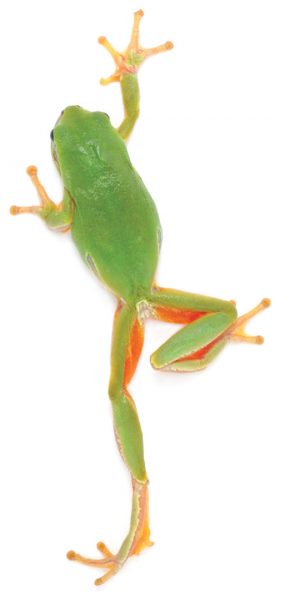Amphibians
All About Amphibians

Amphibians are an ancient group of animals older than the dinosaurs. The class includes frogs, toads, salamanders, and caecilians. They were the first vertebrates (animals with backbones) to inhabit the land, but remained tied to water in order to lay their eggs. Amphibian literally means “two lives” which refers to the tendency for most amphibians to have an aquatic larval stage before metamorphosing into an adult form, usually terrestrial. Amphibians usually have lungs, but also have the ability to breathe through their skin, which needs to stay moist, further tying them to water. Some species have returned to a fully aquatic life, such as newts and sirens, but the vast majority of amphibians spend their adult lives mostly on land. So far there are approximately 8,000 species of amphibians described, with more being identified every year.
Amphibians in Georgia

The State of Georgia is home to 32 different species of frogs and toads and 80 species of amphibians overall. Georgia’s climate and numerous wetlands serve as an ideal habitat for most species of southeastern amphibians. Statesboro’s warm, wet springs and summers attract a great deal of frogs and toads which delight residents with a symphony of calls, from the high whistles of the ornate chorus frog to the low, booming “jug-o-rum” call of the bullfrog. With recent discoveries, Georgia is now home to more species of salamanders than any other place in the world, including unusual lungless salamanders and the largest salamander in America, the hellbender, which inhabits dark rivers and streams in north Georgia.
Amphibians at Risk
Amphibians around the world are currently at great risk. They are beset by many factors that have put their numbers in steep decline. Habitat loss and pollution has set many species towards extinction. Currently, scientists have identified over 1,800 species of amphibians endangered or threatened with extinction, including some species in Georgia. Habitat loss and fragmentation has caused many species to dwindle, and without enough territory, amphibians cannot maintain large enough populations to protect against changes in their environment. Pollution has also been a huge issue, because amphibians take in air and water through their skin, any toxins in their environment are quickly taken into their bodies. The greatest risk recently has been the explosion of a fungus worldwide called chytrid that is fatal to amphibians. This fungus is decimating many species of frogs, and is extremely difficult to treat and prevent. Scientists worldwide are working feverishly to control its spread, but new areas are being affected at an alarming rate. The chytrid fungus has even been found in Georgia.
Amphibians at the Center
The Georgia Southern Center for Wildlife Education houses a variety of both native and exotic amphibians. In our main building you’ll discover the native Southern Toad, a common visitor to local gardens and lawns, as well as the invasive Cane Toad.
In our Wildlife programs, get up close and personal with different species of amphibians and learn all about their biology, ecological role and the challenges facing them. Our line-up is always changing, so come back often to see what we have in store for you!
Last updated: 2/22/2021


